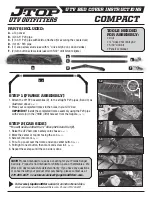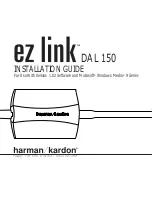
50-608 Kotron Model 811 RF Point Level Sensor
14
• This is an extremely fine adjustment. Sometimes it is
necessary to go 1 to 2 turns past the final SETPOINT
to stop relay chatter. A small amount of time delay
(2 turns) can also be used.
4. The LED shows the status of the relay coil.
LED on = relay energized.
LED off = relay de-energized
5. Set the Fail-safe Mode Selection.
a. In low level fail-safe (LLFS) mode, the relay is
de-energized on rising level and remains de-energized
until upper differential point is reached.
b. In high level fail-safe (HLFS) mode, the relay is
de-energized on falling level and remains de-energized
until the lower setpoint is reached.
6. DIP switch positions:
a. Low Level Fail-safe
1 OFF, 2 OFF, 3 ON, 4 OFF.
LED will be ON.
b. High Level Fail-safe
1 ON, 2 ON, 3 ON, 4 OFF.
LED will be OFF.
7. Verify process level is at desired low control point.
8. COARSE adjustment
a. Low Level Fail-safe
Turn COARSE control clockwise until LED turns OFF.
Turn COARSE control counter clockwise until the
LED is ON.
Slowly turn COARSE control clockwise until LED is
OFF. Low control point is now calibrated.
b. High Level Fail-safe
Turn COARSE control clockwise until LED turns ON.
Turn COARSE control counterclockwise until LED
is OFF.
Slowly turn COARSE control counterclockwise until
LED is ON. Low control point is now calibrated.
NOTE: FINE control can be used during wide differential calibration,
but is usually not needed.
9. Prior to raising level to desired high control point, turn
Differential control 25 turns clockwise or until clicking
sound is heard.
10. Raise level to desired high control point.












































